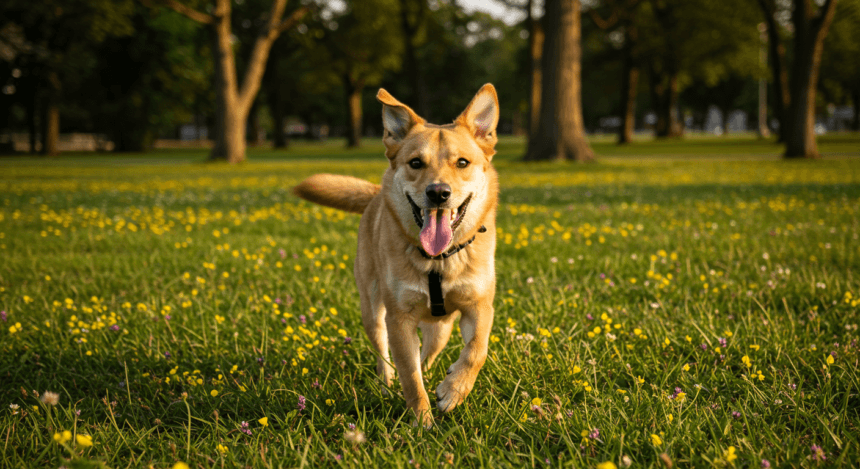Did you know that around 59.3 million adults in the United States have some form of mental illness? This is a growing problem that has forced many people to start paying more attention to mental health. Many people have started thinking of ways that they can use dogs to help treat it. Dogs provide emotional support, companionship, and a sense of responsibility, which can significantly decrease anxiety, depression, and loneliness. Their unshakeable devotion and affection make dogs the ideal companion for those suffering from mental illness, with a sense of security and stability in challenging situations.
Research has shown that the simple act of petting a dog can have tangible mental and physical health benefits. According to Country Living Magazine, petting a dog can lower blood pressure by as much as 10%, providing immediate relief from stress and tension.
“University of Missouri-Columbia scientists found in 2004 that human blood pressure dropped by approximately 10% around 15 to 30 minutes after petting a dog. And in a 2002 study, Animal-Assisted Interventions Research Issues and Answers, scientists noted that there was a significant decrease in blood pressure when research participants completed mental arithmetic tasks in the presence of their pet dogs but without physical contact. And it’s not just dogs that have positive effects on our health, as findings have determined that interaction with cats, rabbits and even turtles can have the same effect,” writes author Roshina Jowaheer.
This calming effect not only improves emotional well-being but can also promote overall relaxation and a sense of peace. The companionship of a dog can thus serve as an invaluable tool for mental health, providing comfort, reducing stress, and fostering positive emotional connections. This is important since high blood pressure is a serious health risk.
Dogs have been by our side for thousands of years with their loyalty, playfulness, and unconditional love. But beyond their ability to make us laugh with their goofy antics, dogs fill roles far beyond companionship. Whether they’re supporting our emotional health, reminding us to stay active, or simply greeting us at the door after a long day, there’s no denying the special bond we share with them. Loving dogs also means understanding their needs—hydration, health, training, and everything in between. Here’s why we adore them and what we can do to keep them happy and thriving.
A Dog can Help Heal a Human Heart
Anyone who has ever been comforted by a dog during a tough time knows that their presence is powerful. They sense emotions, offer silent support, and bring a sense of calm that words can’t match. The role of dogs as healers goes beyond simple companionship—they actively contribute to emotional and physical recovery.
Service dogs, therapy dogs, and even emotional support animals provide real, measurable benefits for those struggling with mental health challenges, PTSD, or even medical conditions. Their ability to lower stress levels, reduce feelings of isolation, and encourage physical activity is nothing short of remarkable. Even for those without a diagnosed condition, spending time with a dog has been shown to lower blood pressure, release serotonin, and create a general sense of well-being.
Taking care of a service or therapy dog requires a little extra effort, but the love and support they give in return make it all worthwhile. Whether trained to assist with medical needs or simply offering a calming presence, these dogs remind us every day that healing doesn’t always come in the form of medicine—it sometimes comes with a wagging tail.
Is Your Dog Drinking Enough Water?
Most pet owners obsess over feeding schedules, but water intake is just as important. Dehydration can lead to serious health issues, from kidney problems to digestive troubles, making hydration a top priority. The challenge? Some dogs simply don’t drink enough on their own. If you’ve ever asked yourself how to get your dog to drink more water, there are some important tips that can help.
Adding water to food, using pet-safe broths, or even investing in a water fountain can encourage a reluctant drinker. On hot days, ice cubes or frozen treats made from low-sodium broth can be a fun way to sneak in extra hydration. For dogs that tend to get distracted, placing multiple water bowls around the house can serve as a reminder to drink more often.
Dogs Greet Us Like We’ve Been Gone Forever
There’s nothing quite like coming home to a dog’s enthusiastic welcome. Whether you’ve been gone for five minutes or five hours, they react with the same level of excitement—jumping, tail-wagging, and spinning in happy circles. But what’s behind this over-the-top greeting?
Dogs don’t experience time the way humans do. While they recognize patterns in our schedules, they live very much in the moment. When you leave, they don’t necessarily understand when you’ll be back, which makes your return feel like a long-awaited reunion. This excitement is also their way of reinforcing the bond they have with you. In the wild, wolves and other pack animals greet each other with physical affection after periods of separation, strengthening their social ties.
Reading Your Dog’s Tail Wagging
Most people assume a wagging tail means a happy dog, but body language in dogs is more nuanced than that. A wag can indicate excitement, but it can also signal nervousness, submission, or even agitation. The speed, height, and stiffness of a wag tell a more complete story about what a dog is feeling.
A relaxed, slow wag usually means contentment, while a high, fast wag can signal excitement or anticipation. If a dog’s tail is stiff and wagging in short bursts, they may be feeling alert or slightly uneasy. A low wag, especially if paired with a lowered body, often means submission or uncertainty. Understanding tail language helps owners gauge their dog’s emotions and respond appropriately.
Dogs Really do Understand What We’re Saying
Dogs may not speak in words, but that doesn’t mean they don’t understand us. Studies have shown that many dogs can recognize hundreds of words and phrases, associating them with actions or objects. But even more impressive is their ability to read human tone and body language.
The way a command is delivered matters just as much as the words themselves. A cheerful, upbeat voice encourages excitement, while a calm, steady tone is better for commands requiring focus. Dogs also rely heavily on facial expressions, eye contact, and hand gestures to interpret meaning.









